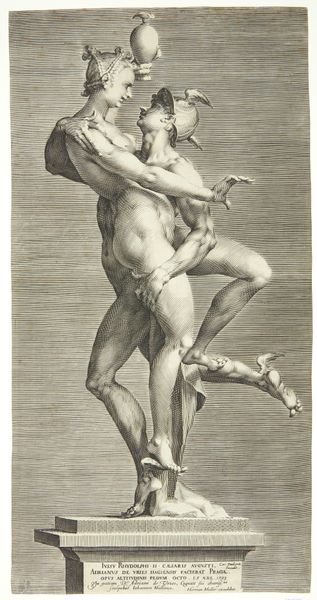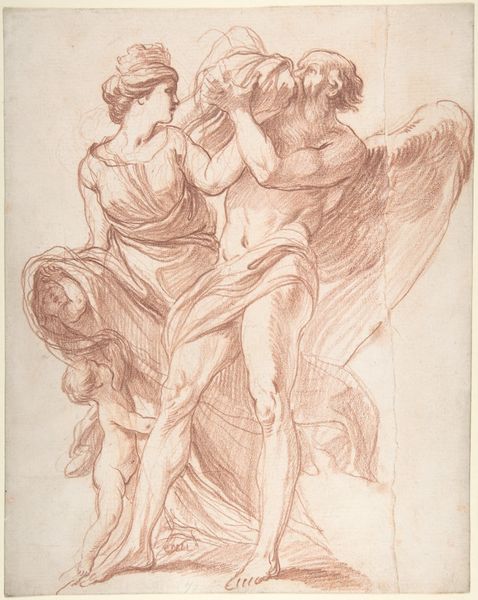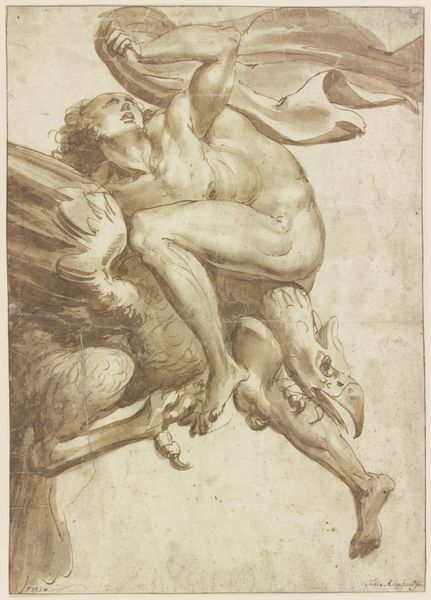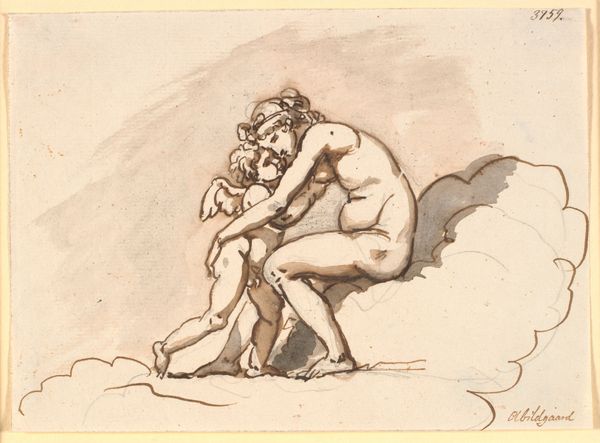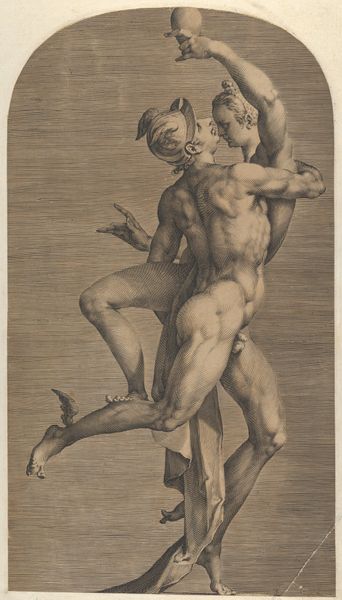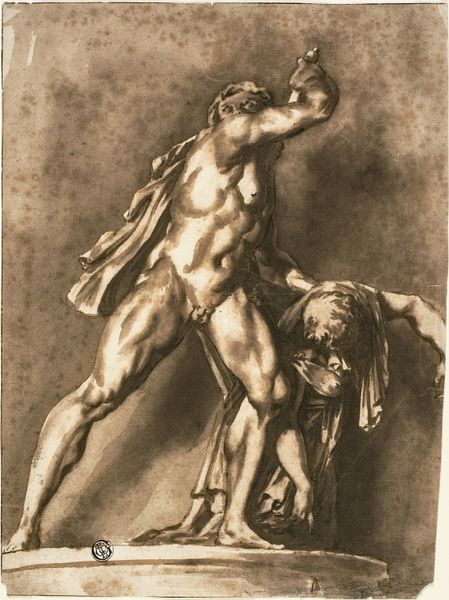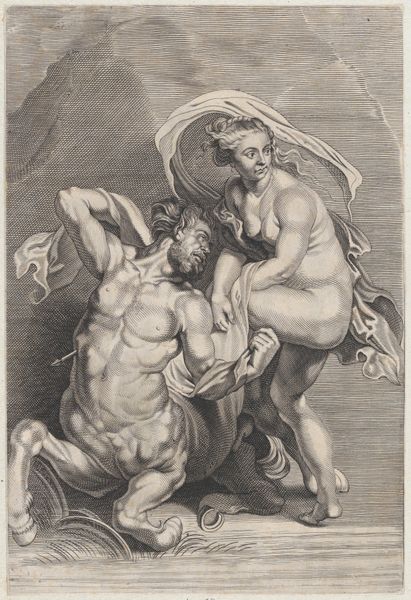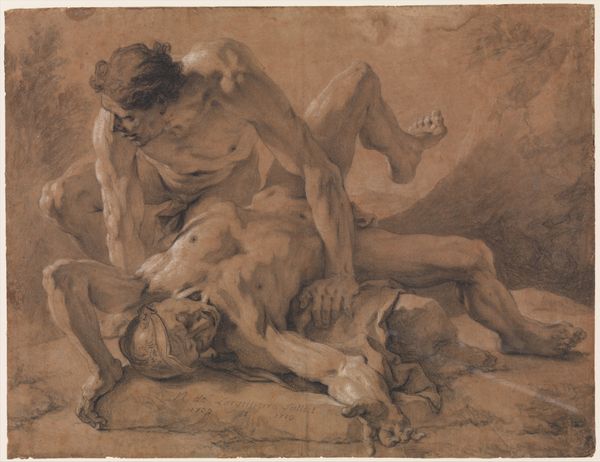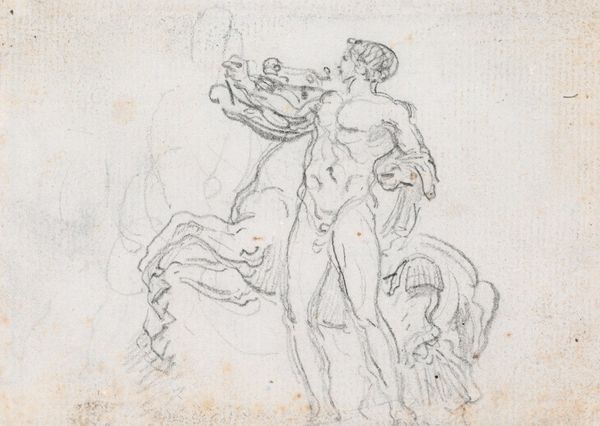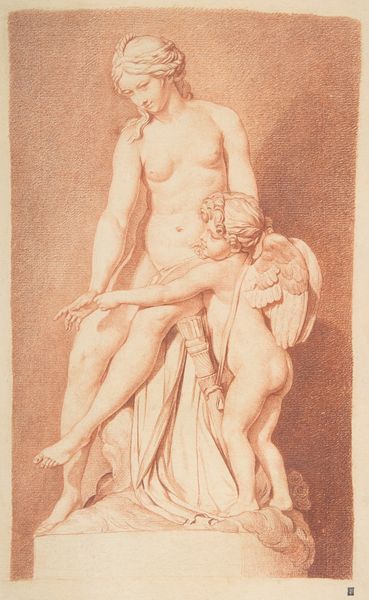
drawing, watercolor, ink
#
drawing
#
figuration
#
watercolor
#
ink
#
mythology
#
human
#
nude
Copyright: Kent Monkman,Fair Use
Curator: "Study for Apollo and Hyacinthus (Sepia)," a 2008 drawing by Kent Monkman employing watercolor and ink. It immediately suggests classical mythology but re-contextualized through Monkman's lens. What's your initial reaction? Editor: Wistful, yet undeniably sensual. It feels ancient and raw at the same time. Is it me, or is there an almost funerary element in how Hyacinthus is draped in Apollo’s arms? Curator: That’s perceptive. The sepia tones lend it a feeling of faded memory, an echo of classical tragedy. We are looking at a powerful interpretation of the Greek myth of Apollo and Hyacinthus. It tells of their intimate bond and Hyacinthus’ accidental death. In Monkman’s vision, it is also clearly about Indigenous experiences and Two-Spirit identity. The work embodies themes of love, loss, and reclamation of queer narratives within historical and mythological contexts. Editor: Yes, there's definitely something deeper going on here. Monkman’s reimagining gives voice to repressed or erased perspectives. Seeing classical forms imbued with this new dimension gives me goosebumps! Is there anything specific you’d note about Monkman's visual language? Curator: His deliberate use of Western art historical techniques, like the idealized male form and dramatic composition, challenges conventional narratives. Then, incorporating the visual language with Indigenous signifiers subverts expectations. The very fact that the figures aren't white embodies the power dynamic shifts at play. Editor: I'd almost describe it as cultural acupuncture—the artist carefully places Indigenous signifiers within classical depictions to spark new currents of understanding. The subtlety almost hides it, but that’s precisely its strength. This study doesn't just tell a story, it dares to reclaim one. Curator: Precisely! And remember, too, that "Apollo and Hyacinthus" carries weight as one of the foundational stories for same-sex love in the Western canon. Editor: Thinking about its sepia coloring… it’s not just about old photographs or some golden era. For me, that monochrome wash invites deep introspection—the artwork becoming a reflective surface to confront histories often left undiscussed. It really reframes how we look at classicism. Curator: Indeed. And hopefully, offers a point of contemplation regarding our own modern stories too. Editor: A potent, gorgeous invitation to revisit our past and redraw our future.
Comments
No comments
Be the first to comment and join the conversation on the ultimate creative platform.
